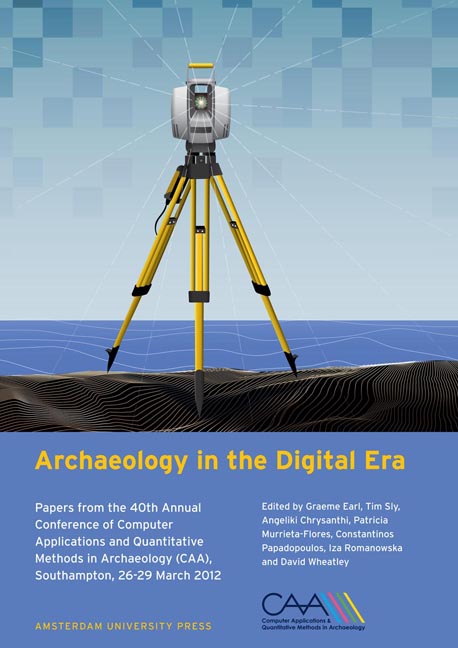 Archaeology in the Digital Era
Archaeology in the Digital Era From Space to Graphs to Understand Spatial Changes Using Medieval and Modern Fiscal Sources
Published online by Cambridge University Press: 16 February 2021
Summary
Abstract:
Medieval and modern fiscal documents provide valuable information about the spatial organization of the countryside. They usually describe each plot, indicating the owner's name, the surface area, the land use, the neighbours, and the location. These lists, which contain hundreds of plots with their relative location, have great potential for analyzing the spatial pattern of village territories and the evolution of the landscape, especially when there is a series of successive documents for the same territory, as is often the case. Nevertheless, they have been dramatically under-exploited because it is difficult to reconstruct the landscape from fieldbooks without maps - and field-maps in France only appeared in the 1^-18^ centuries. To overcome this difficulty, we propose a model of plots described in fiscal documents based on the use of graph theory. The main idea is to take spatial information from registers and former plot plans and transform it into graphs. The translation of spatial data into graphs should allow a bridge to be created between mapped and unmapped historical documents. On these graphs, each plot corresponds to a vertex and each neighbourhood relationship (adjacency) - visible on a plan or described in the documents as a neighbour - to an edge. The work is carried out using two complementary approaches: the first focuses on establishing a database dealing with records without maps. The second extracts the graph from former plot plans in a Geographic Information System. The goal is to match the graphs produced by these two approaches in order to analyze spatial changes by comparing the graphs, which is not possible from plans or registers alone. First, the protocol to transform plot plans into graphs in the GIS will be developed. Secondly, we will consider the possibilities of comparing two graphs corresponding to two successive states in the GIS.
Keywords:
Fieldbook, Cadaster, Geographic Information Systems, Graph Theory, Medieval Ages, Modern Period
Among allthedocumentsavailabletohistorians and archaeologists to reconstruct the dynamics of land use during mediaeval and modern times (13th- 18th centuries), there is a category of sources that is particularly rich in spatial organization data, namely land registers including terriers (fieldbooks) and cadastres, commonly called “compoix” in the south of France.
Information
- Type
- Chapter
- Information
- Archaeology in the Digital EraPapers from the 40th Annual Conference of Computer Applications and Quantitative Methods in Archaeology (CAA), Southampton, 26-29 March 2012, pp. 420 - 427Publisher: Amsterdam University PressPrint publication year: 2014